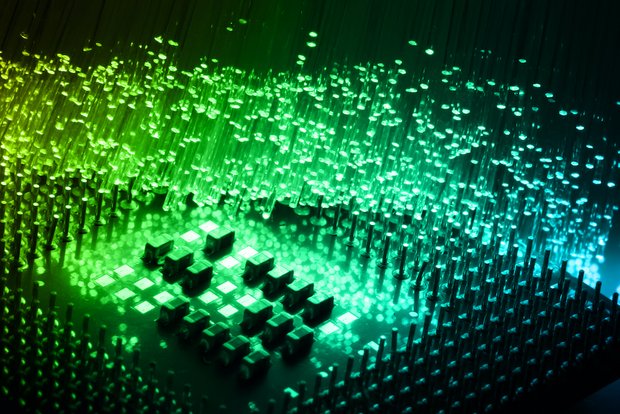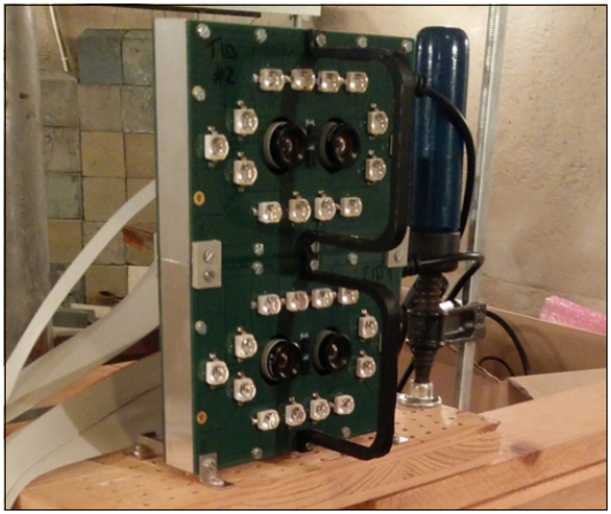Microprocessor Technology & Astrionics

Contact Person: Prof. Dr. Burkart Voß
Contact details:
Tel.: +49 3641 205 731
E-Mail: burkart.voss@eah-jena.de
Web: Homepage

Digital signal processing algorithms can efficiently eliminate or suppress disturbances overlaid on a measurement signal. Depending on the approach, this can often be done in real-time, resulting in less distorted measurement signals being available. Especially in harsh environmental conditions, disturbances are particularly prominent and the available computing power is limited, requiring customized measures to be defined that allow for sufficiently filtered measurement signals.

In addition to the specialization in "Space Electronics" in the Master's degree program in ET/IT, we also deal with research questions that revolve around the consequences of using electronics in space.
The conditions in space are harsh - extreme temperature changes, vacuum, and last but not least, cosmic radiation, from which we are shielded on Earth by the Earth's magnetic field. Cosmic radiation, consisting of very fast ions, is extremely dangerous for electronic components. A single hit of a heavy ion can trigger a short circuit in the component, leading to its destruction if the short-circuit current is not interrupted. This effect is called latchup.
To be able to operate satellites without failures, electronic components are developed, manufactured, and qualified specifically for space applications. This works quite well, but it is expensive. Due to the relatively small demand for such components, older technologies are generally used for manufacturing, which severely limits the performance of integrated circuits. If components that are not specifically qualified for space use are to be used, the system must be designed so that the components are protected from destruction and that (temporary) failures of the components are tolerated. This can be achieved with appropriate redundancy concepts and protection circuits against latchup, which turn off the supply voltage of the components in time and thus interrupt the short circuit.
To be able to develop and test such protective measures, it is necessary to be able to generate the effects of cosmic radiation in the laboratory. This is usually done with particle accelerators - a very complex and expensive method.
Since energy is ultimately deposited in the component by the heavy ions of cosmic radiation, we have investigated whether the latchup effect that destroys the component can also be generated by introducing energy into the component with the help of a short laser pulse after etching the IC package. It has been shown that this even works with a laser diode, as used, for example, in DVD burners. This has resulted in a very compact setup that can be used to reproducibly generate the latchup effect with high spatial resolution and low effort.
Thanks to the spatial resolution, the SEL-sensitive points can be mapped. The above image of the MSP430 was generated with the developed device. The laser pulse energies required to trigger an SEL are color-coded, and the brightness is a measure of the latchup current flowing in the SEL case. Here, it can be seen that different current paths with different latchup currents become effective.
Thus, we are able to develop and test latchup protection circuits, as we can measure, on a relatively large number of components (with corresponding parameter variations), how long it takes for a latchup to destroy the component and how large the variation of this time duration is. Knowing the time one has to turn off the latchup current, one can develop a latchup protection circuit that detects the effect and turns it off in time. After building the protection circuit, we can then extensively test it with a statistically relevant number of test objects using our setup.
It has also been shown that storage errors can be generated selectively, i.e., changing a '0' to a '1' or vice versa. Since these effects can also occur in terrestrial applications and can have significant effects on safety-critical applications, software measures are usually implemented in these safety-critical applications to prevent the effects of these storage errors. However, testing the software is problematic, as storage errors occur very rarely. Here, we can develop solutions using our approach to make these software measures testable.
Research focus summary:
- Investigations into the latchup effect and storage errors in space electronics
- Development of latchup protection circuits